This classic Rosemary Focaccia recipe comes from Amy's Bread in NYC. It's perfectly spongy on the inside, and crispy and olive oily on the outside, just like good focaccia should be.
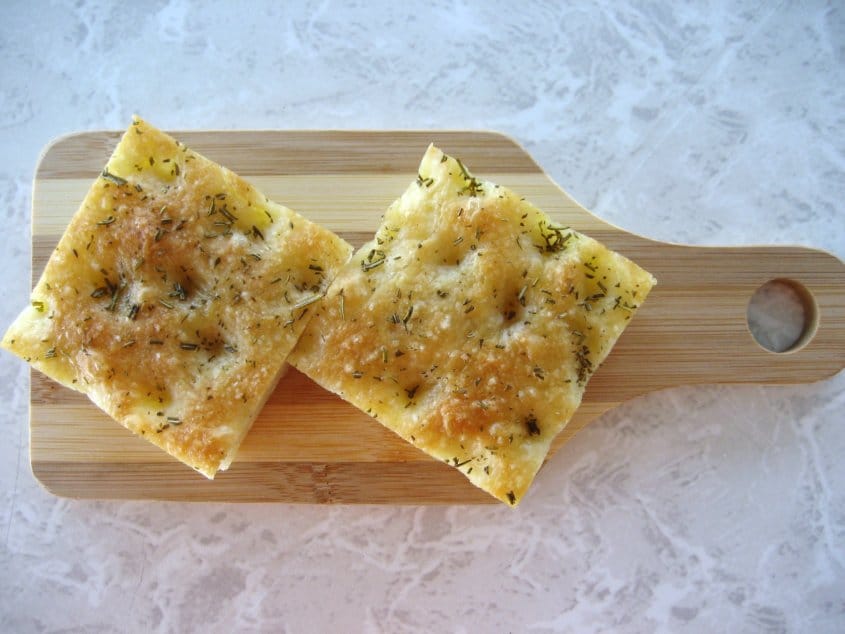
I was a bit intimidated at first with making a starter and creating steam in my oven to bake bread, two things I'd never done before. The starter was a piece of cake to put together. My two-year-old nephew could have mixed it up just fine. The steam issue also worked out just fine with a water spritzer. The rosemary focaccia was AMAZING.
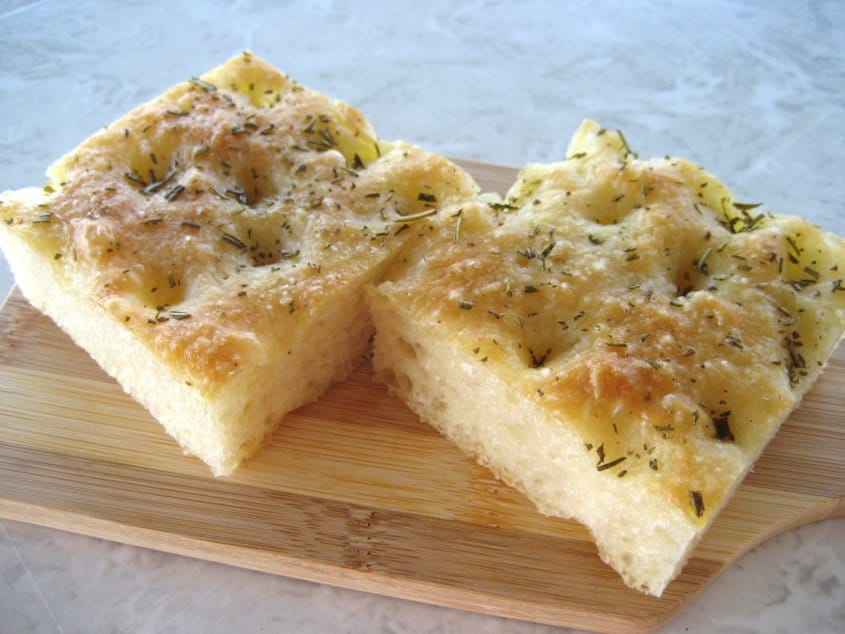
The best bread of any kind, I think, I've baked both in and out of culinary school. Even though it was sticky and messy and took forever, it was not difficult to make. A bit challenging keeping the board on the table (thanks, mom), but otherwise the hardest part was just waiting during each rest period.
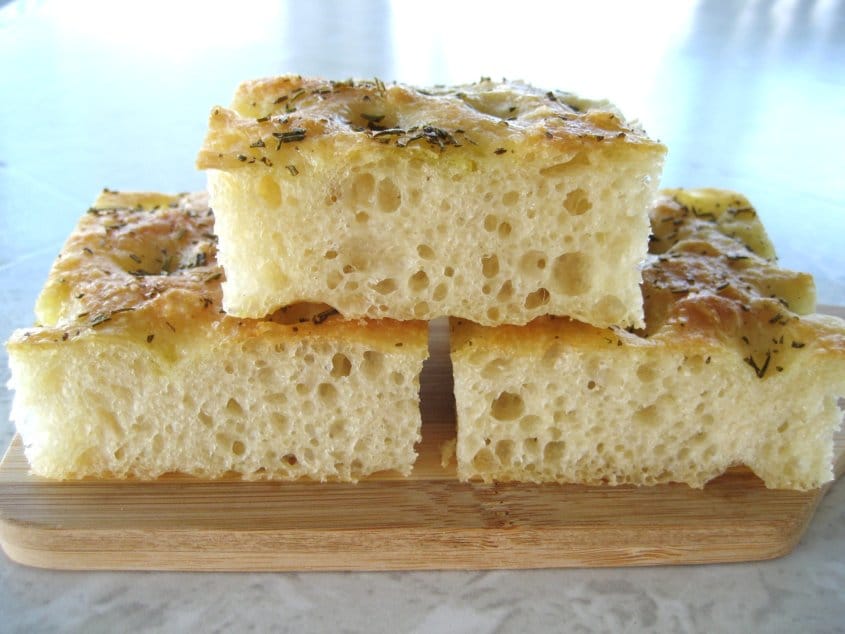
My rosemary focaccia baked up perfectly, had a delightful slightly-salted and rosemary-infused crust on top, with beautiful open holes, and a lovely chewy texture that I can't even begin to describe.
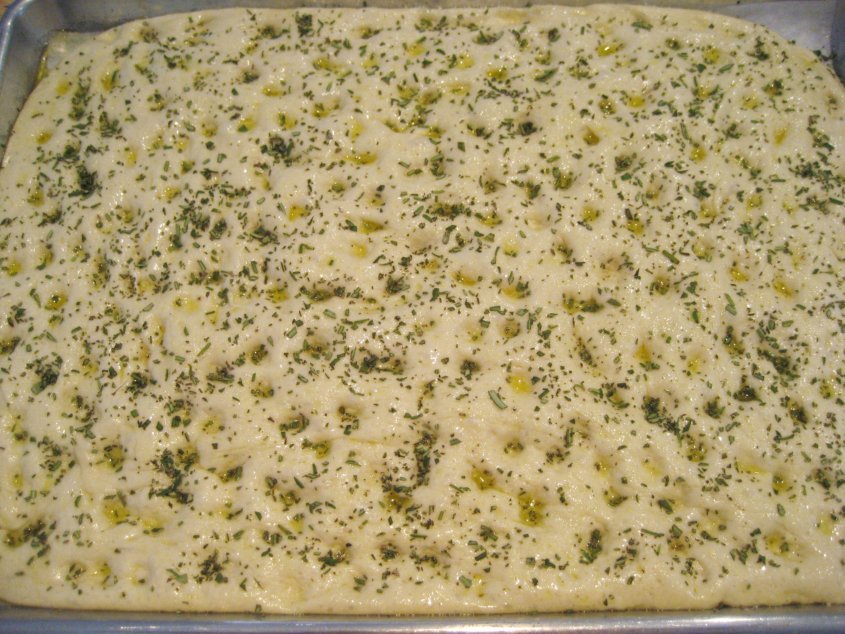
It definitely had a complex flavor and I'm so glad I got to use a starter and fully experience that additional flavor and character that it gave my bread. In the end, after making my starter the night before, taking it out of the fridge super early in the morning, and then working on my rosemary focaccia for over 6 hours before I could finally eat it, would I make it again? Absolutely!
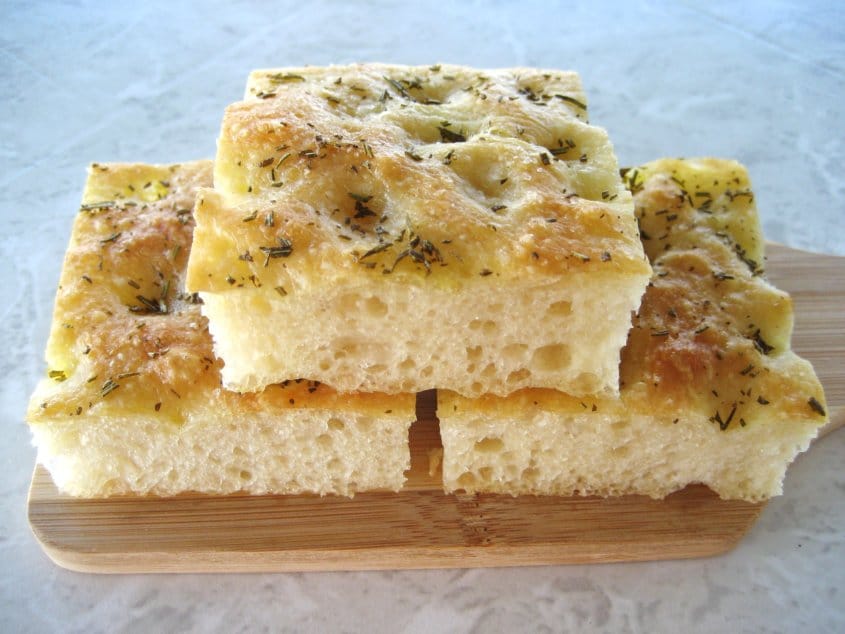
Other recipes you may like
- Za'atar Manakish (Lebanese Za'atar Bread)
- Fresh Thyme Bread with Olive Oil
- Whole Wheat Sandwich Bread with Oats and Pecans
- Honey Glazed Beer Bread
- Sally Lunn Buns (Solange Luyon Buns or Solilemmes)
Tried this recipe? Please leave a star ⭐️⭐️⭐️⭐️⭐️ rating in the recipe card below and/or a review in the comments section further down the page. You can also follow me on social media on Facebook, Instagram, and Pinterest!
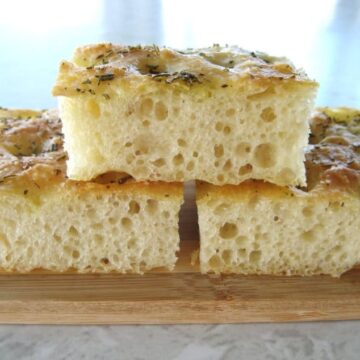
Rosemary Focaccia
Ingredients
- 1 ¾ cups plus 2 tablespoons (15 ounces) warm water (85 to 90°F)
- ½ teaspoon active dry yeast
- 1 ½ cups (12 ounces) biga starter (recipe follows)
- 4 ½ cups (22.5 ounces) unbleached bread flour
- 2 tablespoons plus 2 teaspoons (1.48 ounces) milk
- 2 tablespoons plus 2 teaspoons (1.27 ounces) extra-virgin olive oil
- 1 tablespoon plus 1 ¼ teaspoons (0.45 ounces) kosher salt
- 2 tablespoons plus 1 teaspoon (0.35 ounces) fresh rosemary, about 2 ½ branches, chopped
- Additional extra-virgin olive oil and kosher salt for topping
Instructions
- Line a 17 by 12-inch sheet pan with parchment paper and lightly oil with olive oil. Set aside.
- Place the warm water and yeast in a large bowl. Stir with a fork to dissolve the yeast and allow to stand for about 3 minutes. If you are working in a cool kitchen on a cool day, increase the water temperature to 105°F to give the dough a warmer start.
- Add the biga to the yeast mixture and mix with your fingers for 1 to 2 minutes to break it up. The mixture should look milky and foamy. Add the flour and mix in with your hands, lifting the wet mixture over the flour to incorporate it. When the dough becomes a shaggy mass, move to a very lightly floured surface and knead until it becomes smooth and somewhat elastic, about 5 minutes. Place the dough back into the mixing bowl, cover with oiled plastic, and let rest for 20 minutes to smooth out and develop elasticity.
- After the rest period add the milk, oil, and salt to the dough in the mixing bowl and knead it in the bowl until it is all incorporated.
- Move the dough to a lightly floured work surface and knead until it is very smooth, silky, and elastic, 7 to 10 minutes. The dough will be sticky, but don’t use too much flour for kneading. The finished dough should be wet but supple and springy.
- Put the dough in a lightly oiled bowl, turn it to coat with oil, and cover it tightly with oiled plastic wrap. Let the dough rise at room temperature (75 to 77°F) for 1 hour.
- Turn the dough while it is still in the mixing bowl. Gently deflate the dough in the middle of the bowl with your fingertips, then fold the left side over the middle, and the right side over the middle. Fold the dough in half, gently pat it down, and then turn it over so the seam is underneath. Let it rise again for 1 to 1 ½ hours, until nearly doubled in volume.
- When the dough has risen, loosen it from the bowl and gently pour it onto the center of the oiled baking sheet. Pat it gently with your fingertips to stretch it evenly out to the edges of the pan. Be careful not to tear the dough. If the dough resists stretching, let it rest for 2 to 5 minutes, until it becomes supple enough to stretch again, then continue to press it out to the edges of the pan. (If the dough is dry, you may have to repeat the resting/stretching procedure several times). Brush the top of the dough lightly with olive oil, cover with lightly oiled plastic wrap, and let rise for 1 to 2 hours, until the dough has doubled and fills the pan (a finger pressed into the dough will leave an indentation).
- Thirty minutes before baking, preheat the oven to 425°F. Fill a plastic spray bottle with water and place a small pan (such as a mini loaf pan) on the lowest possible rack of the electric oven. If using a water pan to create steam, also place a cast-iron pan (that you are willing to get rusty) next to the small pan, fill a teakettle with water to be boiled later, and have a metal 1-cup measure with a straight handle available near the kettle.
- Five to 10 minutes before the focaccia is ready to bake, carefully place 2 or 3 ice cubes in the small pan in the bottom of the oven. This helps to create moisture in the oven prior to baking. If using a water pan, also turn the water on to boil.
- Brush and dot the surface of the dough gently with olive oil, dimple it in several spots with your fingertips to prevent air pockets from developing underneath, and sprinkle the surface lightly with kosher salt. Sprinkle with chopped rosemary all the way to the edges.
- Quickly open the oven, and place the pan of focaccia on the oven rack, then using the plastic spray bottle, quickly mist the focaccia 6 to 8 times. If using a water pan, have the metal 1-cup measure already filled with boiling water and carefully pour it into the cast-iron skillet. If not using a water pan, instead quickly spray the walls of the oven 8 to 10 times. Immediately close the oven door. Two minutes later, open the oven and quickly spray the walls 8 to 10 times more, closing it immediately afterward. Spray the walls again 2 minutes later, 8 to 10 times (you will have sprayed the oven walls on 3 separate occasions now if not using a water pan).
- Bake for 15 minutes, then reduce the oven temperature to 350°F and bake for 15 to 20 minutes longer, until golden brown and crusty but still soft inside.
- Remove the focaccia from the oven and immediately brush it lightly with olive oil. Cool in the pan 10 minutes, then carefully slide it onto a cooling rack. Remove the parchment (to prevent steam from softening the bottom crust) and let cool. Serve warm or at room temperature, cut into squares. Focaccia is best served the day it is baked.
Notes
Nutrition
*All nutritional information is based on third-party calculations and should be considered estimates. Actual nutritional content will vary with brands used, measuring methods, portion sizes and more.*
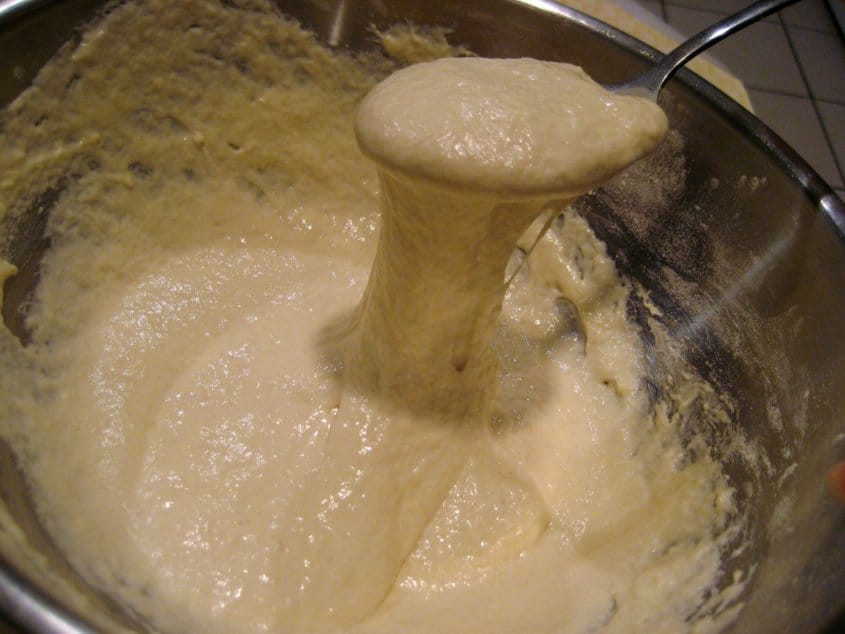
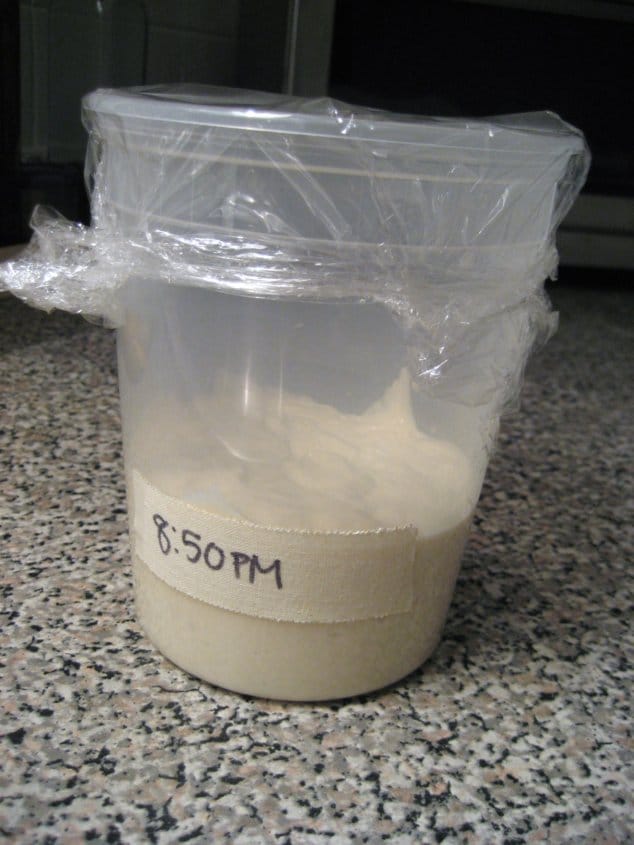
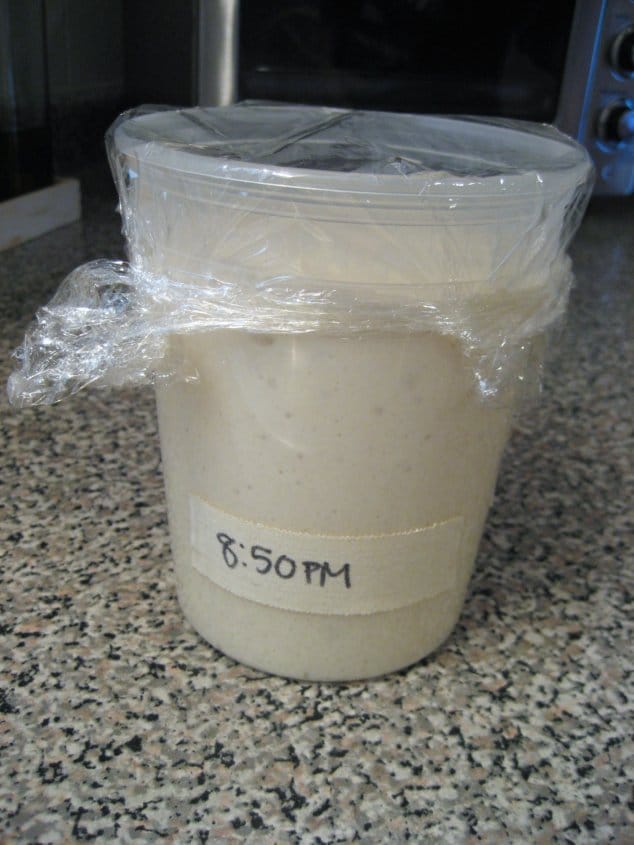
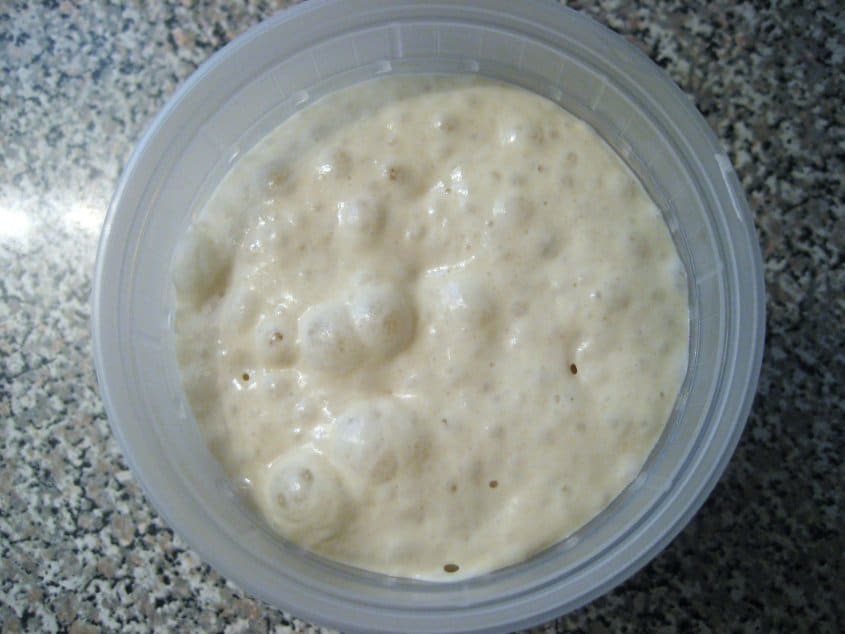
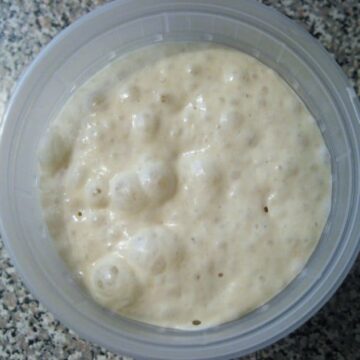
Biga Starter (Small Batch)
Ingredients
- 200 grams (7 ounces / ¾ cup plus 2 tablespoons) very warm water (105º to 115ºF)
- ⅛ teaspoon active dry yeast
- 227 grams (8 ounces / 1 ½ cups plus 2 tablespoons) unbleached all-purpose flour
Instructions
- In a medium bowl, mix the warm water and yeast together and stir to dissolve the yeast. Add the flour and stir vigorously with a wooden spoon for 1 to 2 minutes, until a smooth, somewhat elastic batter has formed. The batter will be fairly thick and stretchy; it gets softer and more elastic after it has risen. Scrape the biga into the container, mark the height of the starter and the time on a piece of tape on the side of the container so you can see how much it rises, and cover the container with plastic wrap.
- Let it rise at room temperature (75º to 78ºF) for 6 to 8 hours. Or let it rise for 1 hour at room temperature, then chill it in the refrigerator for 8 hours or overnight. Remove it from the refrigerator and let it sit at room temperature for 3 to 4 hours to warm up and become active before use. Biga should more than double in volume. If you use the starter while it’s still cold from the refrigerator, be sure to compensate for the cold temperature by using warm water (85ºF to 90ºF) in your dough, instead of the cool water specified in the recipe. Use the starter while it is still bubbling up, but before it starts to deflate.
Notes
*All nutritional information is based on third-party calculations and should be considered estimates. Actual nutritional content will vary with brands used, measuring methods, portion sizes and more.*




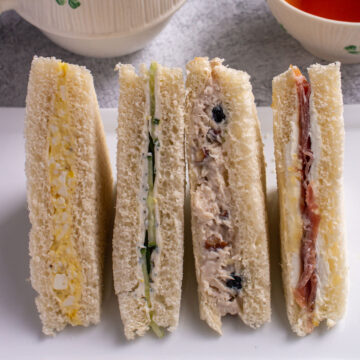
Comments
No Comments